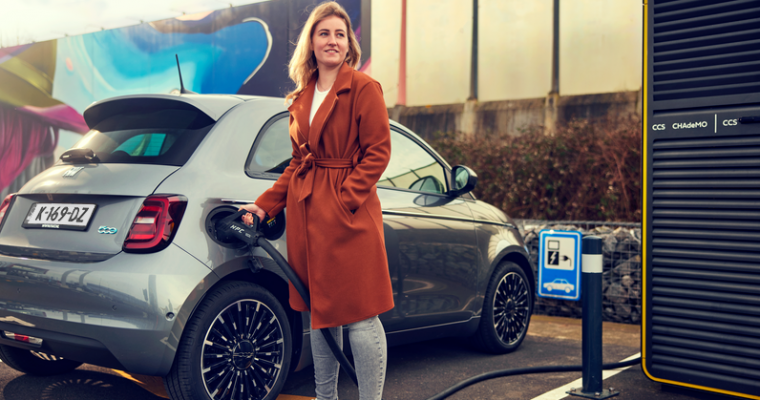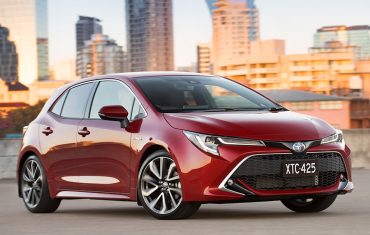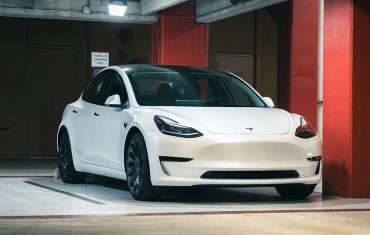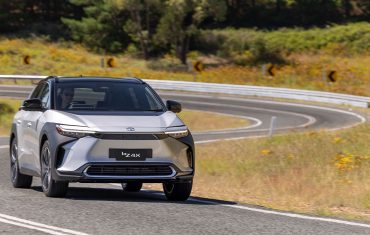
When will electric cars become more affordable?
For driversBy Andrew Maclean
One of the biggest hurdles in the race for electric cars to become more popular is the high entry price for new models.
Electric cars currently command a significant premium over conventional combustion-engine vehicles as car makers attempt to recoup some of the huge research and development costs involved in the creation of these new technologies.
The high-tech Lithium-Ion battery packs are hugely expensive at the moment, with only a few key suppliers which means limited production capacity. There are some simple economic factors at play.
But the tipping point – where electric cars will become more affordable – is edging closer as more and more car makers introduce a wider range of EVs, which in effect creates more competition while consequently reduces production costs as they are amortised over larger volumes.
We can also assume an increase in government incentives and rebates as the pressure to support a lower emission future grows.
Australia’s most affordable EV
At the moment, the MG ZS EV is the most affordable electric car on-sale in Australia. The compact SUV is the first from the Chinese-owned iconic British brand, costing from $40,990 (plus on-roads) – which undercuts the Hyundai Ioniq EV and Nissan Leaf by approximately $8000.
It doesn’t lack for much either, with comparable performance to its rivals and a long list of standard equipment that includes the latest in cutting edge safety technologies.
The ZS EV is driven by a 105kW/353Nm electric motor that is powered by a 44.5kW/h lithium-ion battery pack capable of delivering up to 263km of driving range and can be recharged to 80 capacity on a 50kW fast charger in less than 40 minutes.
It drives nicely, with plenty of punch around town and the ability to cruise comfortably out on the open road. In fact, the simplicity of the electric powertrain makes the EV feel more refined than conventional ZS models powered by a combustion engine with a traditional gearbox, which are still a bit rough around the edges compared to more established rivals.
Similarly, the suspension and steering could be better tuned for Australia’s pockmarked road network but, on the whole, the ZS EV makes a convincing statement as the most affordable electric car in Australia.
That is amplified when you take into account it is equipped with a digital dash, 8.0-inch infotainment display with Apple CarPlay, leather trim, a panoramic sunroof and the full suite of MG Pilot safety features, including automated emergency braking, active cruise control, traffic jam assistance and lane keeping assistance. It is also covered by a bumper-to-bumper five-year, unlimited kilometre warranty while the battery pack is guaranteed for eight years or 160,000km.
MG, which is now part of the state-owned Shanghai Automotive Industry Corporation (SAIC Motor), is the first Chinese car maker to introduce an electric car to Australia, but it won’t be the last.
More Chinese brands coming
China is currently the largest producer of EVs across the automotive landscape. According to forecasts, more than 31 car makers in China will produce in excess of 13 million electric cars per annum within the next
two years – more than triple the number expected to be built by European car makers in the same time frame.
With that in mind, expect a wave of new Chinese brands to enter the Australian market in coming years with a range of affordable EVs.
The first of those is BYD, China’s largest vehicle producer which will be imported by local company True Green Mobility, with a fleet of cut-price electric cars that will cost less than $35,000.
Among those models earmarked to arrive locally within the next 12 months are the T3 commercial van that is aimed at fleets and small business, the EA1 small five-door hatchback and a compact SUV based on the Yuan Plus concept car that was shown at the 2021 Shanghai Motor Show earlier this year.
The T3 van is set to land first – as early as September – with a 70kW/180Nm electric motor and a 49.2kWh battery capable of delivering a claimed range of 300km.
Both the EA1 and yet-to-be-named SUV are claimed to offer more than 500km of range.
All will be offered for sale uniquely online with BYD’s Australian operations claiming that eliminating the traditional dealership model is a major contributing factor in its ability to drive down the price and make the vehicles more affordable.
Government Incentives
Another important factor in making EVs more attractive is taking some of the pain out of the initial purchase price through government schemes.
Financial incentives and rebates for electric cars have been in place in European markets, China and California for some time and have proven to increase the take-up of EVs.
While Australia has been slower to act – and answer calls from the automotive industry – things are starting to change, with several states recently announcing incentive schemes and long-term investment packages to promote sales of battery-powered vehicles.
ACT
The Australian Capital Territory first eliminated stamp duty on EV purchases and has recently expanded the scheme to offer free registration for new and used electric cars purchased before 30 June 2024. It has also implemented a household improvement program allowing eligible owners to borrow up to $15,000 interest free to assist with the installation of items such as solar panels, battery storage and vehicle recharging infrastructure.
VIC
In Victoria, the state government has committed $100 million to reach its target of having 50 percent of all new car sales by 2030 be electric vehicles. To do this, it is offering $3000 rebates to the first 20,000 and investing $19 million in charging infrastructure, on top of the existing incentive that provides an exemption for EVs to be charged at the ‘luxury rate’ of stamp duty and a $100 discount on registration fees.
NSW
New South Wales upped the ante for its 2021 state budget, promising to invest $490 million by 2030 and encouraging the arrival of more affordable electric vehicles. A key part of that is waiving all stamp duty fees on EVs priced below $78,000 with an additional $3000 rebate for vehicles that cost less than the federal Luxury Car Tax benchmark of $68,750.
The NSW Government is also putting its money where its mouth is and promises to transition its entire fleet of vehicles to EVs by 2030, while also investing $131 million in building a larger network of ultra-rapid chargers and offering $20 million in grants to help install destination chargers at key tourist sites.
QLD
In Queensland, EV owners receive a $100 discount on annual registration fees and lower stamp duty rates.
As it is with any new technology, the landscape for electric cars is still pretty fluid. But it is inevitable that EVs will become significantly more affordable in the near future – whether it’s through natural economic factors, competition, lower production costs or government stimulus packages, or the combined effect of all them colliding at once.
Whatever happens, the electric car revolution is well and truly underway.
To make sure your business is ready to transition to electric motoring, talk to LeasePlan today.
 Driving Insights
Driving Insights



